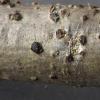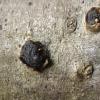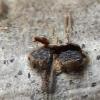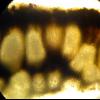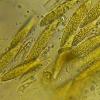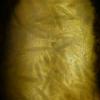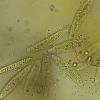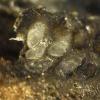
23-04-2024 21:49
Ethan CrensonHello all, A friend recently found this orange as

23-04-2024 15:18
 Lothar Krieglsteiner
Lothar Krieglsteiner
... but likely a basidiomycete. I hope it is o.k.

22-04-2024 11:52
 Zuzana Sochorová (Egertová)
Zuzana Sochorová (Egertová)
Hello,I made a loan of a collection of Microstoma

23-04-2024 13:17
 Edouard Evangelisti
Edouard Evangelisti
Bonjour à tous, Je viens de récolter ce que je

11-01-2022 16:36
Hi does anyone have a digital copy of Raitviir A (

22-04-2024 20:38
 Miguel Ángel Ribes
Miguel Ángel Ribes
Good afternoon.Does anyone know this anamorph?It g

19-04-2024 14:28
Cudoniella tenuispora: Distinctive macro and habit

20-04-2024 16:02
 Michel Hairaud
Michel Hairaud
Bonjour,On me fait part, pour diffusion d une list
Probably anamorph but I have never seen so big conidiophores.
Do you have any ideas?
greetings
Mirek
I think these are only inmature asci. I think you should wait
I will stop branches for further observation.
Thank you
Mirek
I have not read yet, I will leave myself for an evening but it seems to me that I found a response :)
Botryosphaeria?
https://www.researchgate.net/publication/259155846_The_Botryosphaeriaceae_Genera_and_species_known_from_culture
greetings
Mirek
He realizes that here, in turn, macroscopic features do not fit.
Not everyone has such a huge knowledge and experience as you. When, you also started your adventure with mushrooms and you did not have such knowledge as now, you certainly tried different ways.
If you claim that these are ASCI I will not protest. I do not have such a lot of experience as you, but I think I am on such a level that I can distinguish them from spores.
Have a nice day
Forgive me if I accidentally offended, I did not have this intention.
My English basically does not exist so I use a translator.
The translator is very useful, but still very much missing for excellence :(
Mirek
We never have enough experience to know everything, and in fact I may be wrong, but what I do know is that in order to study something we have to have accurate data and in your case we do not.
Best regards
It lasted a bit but I had to be sure that I study ascomata fully mature. I kept the collection in a damp room.
Yesterday they appeared on the surface of Ascomata free conidiophores.
I made two more conidiophores measurements.
1) Downloaded from ascomata
(48.7) 51.5 - 64.3 (69) × (8.1) 9.2 - 11.1 (11.2) µm
Q = (4.6) 4.8 - 6.6 (8.5); N = 33
Me = 56.1 × 10.2 µm; QE = 5.5
2) Free conidiophores
(58) 58.4 - 68 (70.5) × (11.3) 11.32 - 13.27 (13.3) µm
Q = (4.6) 4.61 - 5.8 (5.9); N = 14
Me = 63.8 × 12.3 µm; Qe = 5.2
As you can see their sizes, they do not match the species mentioned.
The Chinese described two other species with larger conidiophores than Melanops tulasnei. One of Quercus but with even larger conidiophores than in my collection.
I'm sorry, but unfortunately remain as Melanops sp.
Thank you all for valuable comments
greetings
Mirek
